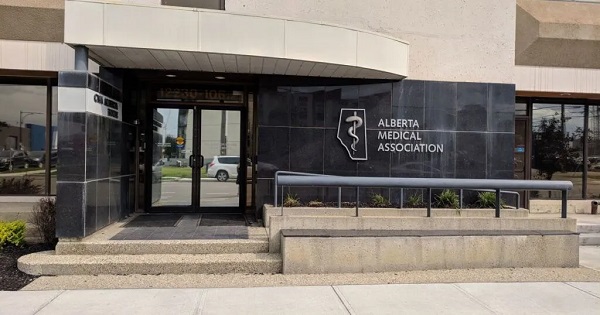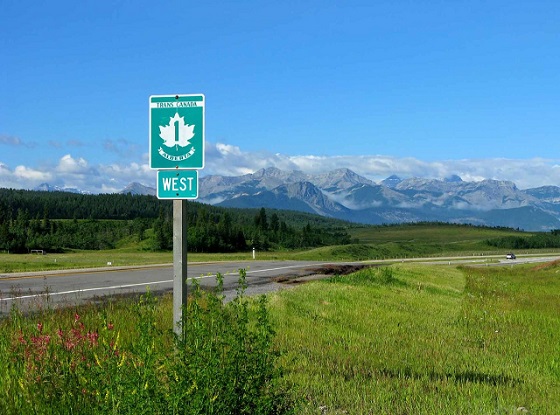Alberta
AMA challenged to debate Alberta COVID-19 Review

Justice Centre President sends an open letter to Dr. Shelley Duggan, President of the Alberta Medical Association
Dear Dr. Duggan,
I write in response to the AMA’s Statement regarding the Final Report of the Alberta Covid Pandemic Data Review Task Force. Although you did not sign your name to the AMA Statement, I assume that you approved of it, and that you agree with its contents.
I hereby request your response to my questions about your AMA Statement.
You assert that this Final Report “advances misinformation.” Can you provide me with one or two examples of this “misinformation”?
Why, specifically, do you see this Final Report as “anti–science and anti–evidence”? Can you provide an example or two?
Considering that you denounced the entire 269-page report as “anti–science and anti–evidence,” it should be very easy for you to choose from among dozens and dozens of examples.
You assert that the Final Report “speaks against the broadest, and most diligent, international scientific collaboration and consensus in history.”
As a medical doctor, you are no doubt aware of the “consensus” whereby medical authorities in Canada and around the world approved the use of thalidomide for pregnant women in the 1950s and 1960s, resulting in miscarriages and deformed babies. No doubt you are aware that for many centuries the “consensus” amongst scientists was that physicians need not wash their hands before delivering babies, resulting in high death rates among women after giving birth. This “international scientific consensus” was disrupted in the 1850s by a true scientist, Dr. Ignaz Semmelweis, who advocated for hand-washing.
As a medical doctor, you should know that science is not consensus, and that consensus is not science.
It is unfortunate that your AMA Statement appeals to consensus rather than to science. In fact, your AMA Statement is devoid of science, and appeals to nothing other than consensus. A scientific Statement from the AMA would challenge specific assertions in the Final Report, point to inadequate evidence, debunk flawed methodologies, and expose incorrect conclusions. Your Statement does none of the foregoing.
You assert that “science and evidence brought us through [Covid] and saved millions of lives.” Considering your use of the word “millions,” I assume this statement refers to the lockdowns and vaccine mandates imposed by governments and medical establishments around the world, and not the response of the Alberta government alone.
What evidence do you rely on for your assertion that lockdowns saved lives? You are no doubt aware that lockdowns did not stop Covid from spreading to every city, town, village and hamlet, and that lockdowns did not stop Covid from spreading into nursing homes (long-term care facilities) where Covid claimed about 80% of its victims. How, then, did lockdowns save lives? If your assertion about “saving millions of lives” is true, it should be very easy for you to explain how lockdowns saved lives, rather than merely asserting that they did.
Seeing as you are confident that the governments’ response to Covid saved “millions” of lives, have you balanced that vague number against the number of people who died as a result of lockdowns? Have you studied or even considered what harms lockdowns inflicted on people?
If you are confident that lockdowns did more good than harm, on what is your confidence based? Can you provide data to support your position?
As a medical doctor, you are no doubt aware that the mRNA vaccine, introduced and then made mandatory in 2021, did not stop the transmission of Covid. Nor did the mRNA vaccine prevent people from getting sick with Covid, or dying from Covid. Why would it not have sufficed in 2021 to let each individual make her or his own choice about getting injected with the mRNA vaccine? Do you still believe today that mandatory vaccination policies had an actual scientific basis? If yes, what was that basis?
You assert that the Final Report “sows distrust” and “criticizes proven preventive public health measures while advancing fringe approaches.”
When the AMA Statement mentions “proven preventive public health measures,” I assume you are referring to lockdowns. If my assumption is correct, can you explain when, where and how lockdowns were “proven” to be effective, prior to 2020? Or would you agree with me that locking down billions of healthy people across the globe in 2020 was a brand new experiment, never tried before in human history? If it was a brand new experiment, how could it have been previously “proven” effective prior to 2020? Alternatively, if you are asserting that lockdowns and vaccine passports were “proven” effective in the years 2020-2022, what is your evidentiary basis for that assertion?
Your reference to “fringe approaches” is particularly troubling, because it suggests that the majority must be right just because it’s the majority, which is the antithesis of science.
Remember that the first doctors to advocate against the use of thalidomide by pregnant women, along with Dr. Ignaz Semmelweis advocating for hand-washing, were also viewed as “advancing fringe approaches” by those in authority. It would not be difficult to provide dozens, and likely hundreds, of other examples showing that true science is a process of open-minded discovery and honest debate, not a process of dismissing as “fringe” the individuals who challenge the reigning “consensus.”
The AMA Statement asserts that the Final Report “makes recommendations for the future that have real potential to cause harm.” Specifically, which of the Final Report’s recommendations have a real potential to cause harm? Can you provide even one example of such a recommendation, and explain the nature of the harm you have in mind?
The AMA Statement asserts that “many colleagues and experts have commented eloquently on the deficiencies and biases [the Final Report] presents.” Could you provide some examples of these eloquent comments? Did any of your colleagues and “experts” point to specific deficiencies in the Final Report, or provide specific examples of bias? Or were these “eloquent” comments limited to innuendo and generalized assertions like those contained in the AMA Statement?
In closing, I invite you to a public, livestreamed debate on the merits of Alberta’s lockdowns and vaccine passports. I would argue for the following: “Be it resolved that lockdowns and vaccine passports imposed on Albertans from 2020 to 2022 did more harm than good,” and you would argue against this resolution.
Seeing as you are a medical doctor who has a much greater knowledge and a much deeper understanding of these issues than I do, I’m sure you will have an easy time defending the Alberta government’s response to Covid.
If you are not available, I would be happy to debate one of your colleagues, or any AMA member.
I request your answers to the questions I have asked of you in this letter.
Further, please let me know if you are willing to debate publicly the merits of lockdowns and vaccine passports, or if one of your colleagues is available to do so.
Yours sincerely,

John Carpay, B.A., LL.B.
President
Justice Centre for Constitutional Freedoms
Alberta
Tell the Province what you think about 120 km/h speed limit on divided highways

Alberta’s government is engaging with Albertans on increasing speed limits on rural highways.
Starting Nov. 7, Albertans can share their views on modernizing speed limits on divided highways through an online survey running until Dec. 12. The survey will ask how Albertans view raising the speed limit by 10 km/h on various highways from 110 km/h to 120 km/h.
“Alberta’s government is investigating how to safely increase speed limits on divided highways, and if Albertans support increasing speed limits. We are investing more than $1.5 billion this year alone to improve highway safety and upgrade infrastructure across the province. We want Albertans to be able to drive the speed limit that the highways are designed for. Modern vehicles combined with public awareness mean we can explore higher speed limits.”
The survey will provide Albertans with the opportunity to provide input on which highways they would prioritize having a speed limit increase, their views on restricting commercial trucks from using the far-left lane on highways with three or more lanes and any other feedback that would improve driving experiences on provincial highways.
Following a review of the survey results, Alberta’s government plans to conduct a mini-trial of a 120 km/h speed limit to assess the impacts of higher speed limits on divided highways. The trial will include strong monitoring to assess driving behaviour.
Alberta’s government reminds motorists to slow down and drive to the conditions. Speed limits are set for ideal conditions. When roads are wet, icy or when there is reduced visibility, motorists should slow down.
Quick facts
- Alberta’s provincial highway network includes more than 64,000 lane kilometres of highways, about 11,700 lane kilometres of which are divided.
- The posted speed limits of Alberta’s divided highways range from 100 to 110 km/h, although the posted speed limits on segments passing through cities, towns and First Nation lands can be as low as 50 km/h due to factors such as signalized intersections, pedestrians and local access.
Related information
- The survey is available online.
Alberta
Alberta Announces Members of Class Size and Complexity Committee

A new Class Size and Complexity Cabinet Committee has been struck to address classroom challenges.
Taking action on class size and complexity
Classrooms in Alberta continue to grow and are becoming increasingly complex, and immediate action is needed to address these issues in the public education system. To meet these issues head on, the Class Size and Complexity Cabinet Committee has been created. The cabinet committee will help guide government policy and deploy resources to deal with class sizes and classroom complexity.
“We are committed to providing world-class education, and we’re building schools and funding education at a rate unprecedented in this province. This committee will help us address the concerns of teachers, parents and students around class sizes and complexity.”
Throughout November, Alberta’s government will continue work with school boards to collect data on class sizes and classroom composition. The cabinet committee will use this data to direct resources to the classrooms that need it the most. Starting in January, this data will be made available and released annually.
The Class Size and Complexity Cabinet Committee will be co-chaired by the Premier of Alberta and the Minister of Education and Childcare. It will also include non-voting members representing school boards, administrators and a teacher representative of the ATA. The committee will also hear from school boards, academic experts, teachers, educational assistants, complex needs specialists and parents to inform its decisions and guide this vital work.
“We heard teacher concerns, and we are providing solutions. The Class Size and Complexity Cabinet Committee will help us take immediate action and ensure teachers and students are given the support they need to succeed.”
In June 2025, Alberta’s government established the Aggression and Complexity in Schools Action Team to provide advice on addressing classroom complexity. The report has been received and will be released soon. Over the coming months, the cabinet committee will start rolling out solutions informed by the action team’s recommendations. In addition, the committee will guide the creation of a new inclusive education policy framework.
“The work of this committee will support teachers in responding to the growing complexity in our classrooms. We will ensure that the voices of the contributors to the initial work guide
solutions that truly improve the educational experience for students and the educators who serve them.”
“I appreciate the government’s recognition of the impact of classroom complexity and their commitment to working collaboratively for improvement. Supporting teachers ultimately improves classroom conditions and student outcomes.”
Using data collected, this cabinet committee will also guide Alberta’s government in executing its commitment to hire 3,000 new teachers and 1,500 new educational assistants over the next three years. They will also assist in identifying and prioritizing where new schools and modulars should be built, advancing the government’s commitment to invest $8.6 billion to build 130 new schools, and provide 109 modular classrooms in the growing communities that need them urgently.
Quick facts
- Members of the Class Size and Complexity Cabinet Committee include:
- Danielle Smith, Premier of Alberta
- Demetrios Nicolaides, Minister of Education and Childcare
- Jason Nixon, Minister of Assisted Living and Social Services
- Rick Wilson, Minister of Mental Health and Addiction
- Searle Turton, Minister of Child and Family Services
- Lynnette Anderson, chief superintendent, Edmonton Catholic Schools
- Nicole Buchanan, chair, Red Deer Public Schools
- Marilyn Dennis, former president of Alberta School Boards Association
- Mike McMann, superintendent, Fort Vermilion Schools and President, College of Alberta School Superintendents
- Joanne Pitman, chief superintendent, Calgary Board of Education
- Dr. Elissa Corsi, Alberta Teachers’ Association
- Only Cabinet members are voting members. Additional guests will be invited to attend and share their expertise at the discretion of the chairs.
- School boards will be required to submit data on Alberta classrooms by Nov. 24.
-

 espionage2 days ago
espionage2 days agoU.S. Charges Three More Chinese Scholars in Wuhan Bio-Smuggling Case, Citing Pattern of Foreign Exploitation in American Research Labs
-

 Business1 day ago
Business1 day agoCarney budget doubles down on Trudeau-era policies
-

 Daily Caller2 days ago
Daily Caller2 days agoUN Chief Rages Against Dying Of Climate Alarm Light
-

 COVID-191 day ago
COVID-191 day agoCrown still working to put Lich and Barber in jail
-

 Business1 day ago
Business1 day agoCarney budget continues misguided ‘Build Canada Homes’ approach
-

 Business23 hours ago
Business23 hours agoCarney’s Deficit Numbers Deserve Scrutiny After Trudeau’s Forecasting Failures
-

 International23 hours ago
International23 hours agoKazakhstan joins Abraham Accords, Trump says more nations lining up for peace
-

 Business2 days ago
Business2 days agoU.S. Supreme Court frosty on Trump’s tariff power as world watches







